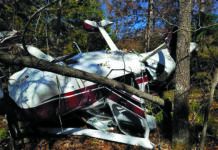I continue to be impressed with the ability of LSA designers to meet the strange and arbitrary weight limit for the category and still carry a reasonable amount of fuel. At the same time, I am hearing more and more questions about the crashworthiness of the airplanes and whether the manufacturer of such a flyweight machine can incorporate some degree of protection against a quick, unplanned stop for those who fly in them.
The argument “we build them to fly, not to crash” was rendered moot 50 years ago because of the simple reality that designers know very we’ll that their airplanes will crash and they have an obligation to avoid putting something in the airplane that makes the effect of the crash worse.
My observation is that modern designers may not have been exposed to or have forgotten the hard-learned basics of crashworthiness from the full-scale crash tests performed by NASA and others in the 1950s-1970s.
Some lessons have stuck, such as the absolute requirement for lap and upper torso restraint. I’m not sure all designers understand that even with a restraint system, there has to be “flail space” for each occupant because there is some slack in the belts and the fabric stretches when loaded. That means that there should not be hard or sharp objects in that space.
The full-scale crash tests at NASA-Langley showed that airplanes do not behave quite the same as do cars during a crash sequence. Airplanes commonly come to grief on dirt or grass, so the gear drag pulls the nose downward. The effect on the pilot is that s/he goes forward and up, and may hit the ceiling before the restraint lap belt and shoulder harness pulls back and down.
Cessna saw this back in the 1960s and made sure its airplanes and jets had no switches or radio knobs on the ceiling as those were head injuries waiting to happen. Despite the lessons of the NASA tests, I still see hard protrusions just in front of and above pilots’ heads even in modern, Part 23 airplanes.
Putting a fuel tank in front of the pilot is so obviously dangerous that, with today’s knowledge, I don’t know how a manufacturer could defend the design in a post-crash fire lawsuit. The Ercoupe, J-3 Cub, Champ and similar designs are known for parboiling people in relatively low-impact crashes when the engine comes back and opens up the fuel tank— I can think of no logical reason for such a design in this century.
I’m not crazy about fuel tanks anywhere in the fuselage, but I’ve seen no crash data to show that fuel tanks aft of the occupants are dangerous.
Beech, Piper and Cessna have long shown that the correct routing of fuel lines is along and behind (if possible) major structural members so that they receive some protection during an impact sequence.
I like the low stall speeds of LSAs. Touching down slowly, with minimal energy to dissipate (force of impact is a squared function), makes a difference in crash survivability. Nevertheless, a sudden stop from 20 or 30 knots can be just as fatal as one from 60 knots if the impact energy is not absorbed by the structure and the occupants don’t have adequate flail space for the restraint system installed, or the airplane catches fire before they can get out.
I think Paul Bertorelli’s perceptive article on LSA safety on page 4 is going to generate a much-needed discussion in the industry. It is an excellent starting place for opening a candid conversation on LSA crashworthiness because we all know that, sadly, not every flight goes according to plan.




